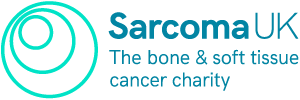Rehabilitation after a distal or proximal humeral replacement will be different for everyone.
What is distal and proximal humeral replacement?
The humerus is the bone that connects your shoulder to your elbow. The distal humerus is the lower end of your humerus bone and forms part of your elbow. The proximal humerus is the upper end, near your shoulder and forms part of your shoulder joint.
A proximal humeral replacement (PHR) will replace the shoulder joint and the top third of the humerus. A distal humeral replacement (DHR) will replace the elbow and the bottom third of the humerus.
It’s an option for some people that means you will not have a whole limb amputated.
After replacement surgery
After DHR or PHR, you will see a physiotherapist and an occupational therapist. This is usually the day after surgery.
Physiotherapy for DHR or PHR
Your physiotherapist will teach you exercises to do and give you a rehabilitation plan. It is very important you do the exercises to make sure you can move your new joint as well as possible.
You might find it hard to move the joint after surgery, and you will need to wear a sling. Your physiotherapist will also make sure that you are wearing your sling correctly.
Your physiotherapist will give you exercises to do at home after discharge. It is very important that you do these regularly to make sure you get the best possible outcome from your surgery. You will also be referred to ongoing physiotherapy as an outpatient as close as possible to where you live.
Occupational therapy for DHR or PHR
You will see an occupational therapist (OT) while you’re recovering in hospital. They’ll help you by discussing how you’ll manage your activities and daily life after leaving hospital.
An OT can also help you by:
- showing you techniques to be more independent with daily living activities
- showing you one handed techniques to manage day to day activities while in a sling
- recommending equipment to help you at home
- giving you advice about returning to work or school
- helping you return to usual leisure activities.
You might be referred to other members of the rehabilitation team too. Speak to your physiotherapist, clinical nurse specialist (CNS) or specialist about other forms of rehabilitation you might benefit from.












